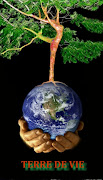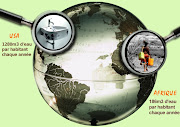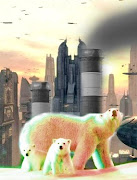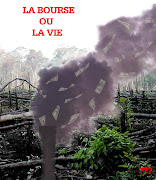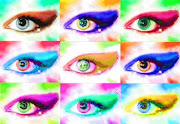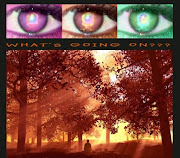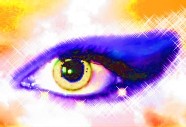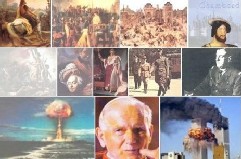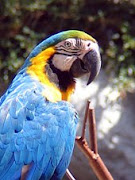TROGER, Vincent. La publicité entre manipulation et propagande. Sciences Humaines [en ligne], Décembre 2003/Janvier Février 2004, Le monde de l’image, Hors série N°43. Disponible à l’adresse : http://www.scienceshumaines.com/la-publicite-entre-manipulation-et-creation_fr_13545.html
"Très critiquée à cause de son rôle marchand et de sa volonté de persuasion, l'image publicitaire a pourtant fait appel aux milieux artistiques. Loin d'avoir l'efficacité qu'on lui prête, elle s'affirme comme une forme de culture à part entière."
[...]
DUBLIN CORE
Creator : TROGER, Vincent
Title : La publicité entre manipulation et propagande
Description : Wonders if the advertising image is a simple instrument of profit or a popular and artistic expression. Defines this type of image, tries to explain its links with artistic and contemporary fashions , plastic arts, cinema, and wonders about their influence in the meadow of the public on a commercial, esthetic and symbolic plan.
Language : Fr
Type : Text
Identifier : http://www.scienceshumaines.com
Subject : advertising images - cinema - propaganda images
jeudi 20 mars 2008
L'IMAGE ET LA VERITE
WAJCMAN, Gérard. L’image et la vérité. Savoirs et clinique, 2003, N°3, [en ligne] disponible à l’adresse : http://www.cairn.info/revue-savoirs-et-cliniques-2003-2-page-57.htm
"On partirait d’une question intemporelle qui serait : le visible a-t-il un cœur ? Y a-t-il un centre, un fondement du visible ? Y a-t-il une vérité du visible, un secret aux images ?À la question ainsi posée, il y a eu, comme on sait, deux réponses massives. La première est que le visible n’a pas de cœur, qu’il n’a aucune vérité – c’est la version selon laquelle le secret du visible, c’est qu’il n’est qu’une ombre, une apparence illusoire, trompeuse, vaine et condamnable. Cette version philosophique qui, depuis Platon, condamne l’image aura eu un destin immense dans l’histoire des images." [...]
DUBLIN CORE
Creator : WAJCMAN, Gérard
Title : L’image et la vérité
Description : There was the Platonic truth of images: an illusion which says that it is an illusion. There was the Christian truth of images: invisible becoming visible. Another truth appeared in the XXth century: what it bases images, it's what is irrepresentable, avoid or horrific. Lacan has formulated that for the psychoanalysis: the secret of images, it is the castration. This truth had a name in the century: gas chambers. Art took care of this truth.
Language : Fr
Type : Text
Identifier : http://www.cairn.info/
Subject : Truth - illusions - representations - xxth century - gas chambers - art - psychoanalysis
"On partirait d’une question intemporelle qui serait : le visible a-t-il un cœur ? Y a-t-il un centre, un fondement du visible ? Y a-t-il une vérité du visible, un secret aux images ?À la question ainsi posée, il y a eu, comme on sait, deux réponses massives. La première est que le visible n’a pas de cœur, qu’il n’a aucune vérité – c’est la version selon laquelle le secret du visible, c’est qu’il n’est qu’une ombre, une apparence illusoire, trompeuse, vaine et condamnable. Cette version philosophique qui, depuis Platon, condamne l’image aura eu un destin immense dans l’histoire des images." [...]
DUBLIN CORE
Creator : WAJCMAN, Gérard
Title : L’image et la vérité
Description : There was the Platonic truth of images: an illusion which says that it is an illusion. There was the Christian truth of images: invisible becoming visible. Another truth appeared in the XXth century: what it bases images, it's what is irrepresentable, avoid or horrific. Lacan has formulated that for the psychoanalysis: the secret of images, it is the castration. This truth had a name in the century: gas chambers. Art took care of this truth.
Language : Fr
Type : Text
Identifier : http://www.cairn.info/
Subject : Truth - illusions - representations - xxth century - gas chambers - art - psychoanalysis
Libellés :
art,
gas chambers,
illusion,
invisible,
psychoanalysis,
truth,
visible,
XXth century
jeudi 13 mars 2008
LE SENS DU REGARD
GERVEREAU, Laurent. BBF, 2001, n°5, p. 22-25 [en ligne] Disponible à l’adresse : http://bbf.enssib.fr/
« Nous avons essayé de reconnaître la part qui revenait au spectateur dans le déchiffrage des images, autrement dit la possibilité qui s’offrait à lui de collaborer avec l’artiste afin de transformer un morceau d’une toile couverte de couleurs en une représentation de l’univers visible », expliquait Ernst Hans Gombrich dans Art and Illusion. Il n’est en effet d’images que perçues, et Marcel Duchamp apporta sa malicieuse contribution personnelle à un tel phénomène en affirmant l’importance du « regardeur ».
Voilà pourquoi il serait vain d’introduire toute espèce de compréhension-réflexe codifiée et systématisable dans l’appréhension individuelle des images. Les créateurs d’icônes cherchèrent certes à y introduire des codes : toutes les images, depuis les plus anciennes figurations préhistoriques, fonctionnent en effet sur des codes consistant en une transposition de l’univers matérialisé sous deux dimensions synthétiques.
[...]
DUBLIN CORE
Creator : GERVEREAU, Laurent
Title : Le sens du regard
Description : Analyzes the effects of images on the spectators. Presents an historic of images and explains its various contexts. Proposes keys for their interpretation.
Language : Fr
Type : Text
Identifier : http://bbf.enssib.fr/
Subject : Spectators - icons - image analysis - photography - manipulation by images - chronology of images - creation of images - semiology
« Nous avons essayé de reconnaître la part qui revenait au spectateur dans le déchiffrage des images, autrement dit la possibilité qui s’offrait à lui de collaborer avec l’artiste afin de transformer un morceau d’une toile couverte de couleurs en une représentation de l’univers visible », expliquait Ernst Hans Gombrich dans Art and Illusion. Il n’est en effet d’images que perçues, et Marcel Duchamp apporta sa malicieuse contribution personnelle à un tel phénomène en affirmant l’importance du « regardeur ».
Voilà pourquoi il serait vain d’introduire toute espèce de compréhension-réflexe codifiée et systématisable dans l’appréhension individuelle des images. Les créateurs d’icônes cherchèrent certes à y introduire des codes : toutes les images, depuis les plus anciennes figurations préhistoriques, fonctionnent en effet sur des codes consistant en une transposition de l’univers matérialisé sous deux dimensions synthétiques.
[...]
DUBLIN CORE
Creator : GERVEREAU, Laurent
Title : Le sens du regard
Description : Analyzes the effects of images on the spectators. Presents an historic of images and explains its various contexts. Proposes keys for their interpretation.
Language : Fr
Type : Text
Identifier : http://bbf.enssib.fr/
Subject : Spectators - icons - image analysis - photography - manipulation by images - chronology of images - creation of images - semiology
Libellés :
analysis of images,
chronology of images,
creation of images,
icons,
photography,
semiology,
spectators
jeudi 21 février 2008
LA MANIPULATION PAR L'IMAGE
MEYRAN, Régis. La manipulation par l’image. [en ligne] http://www.scienceshumaines.com/-0ala-manipulation-par-l-image-0a_fr_13548.html, Décembre 2003/Janvier Février 2004, Le monde de l’image, Hors série N°43. Disponible à l’adresse : http://www.scienceshumaines.com/-0ala-manipulation-par-l-image-0a_fr_13548.html
L'association d'images symboliques à des mots est à l'origine de la propagande de masse. Mais, si l'intention de manipulation et de mensonge y prédomine, son efficacité supposée dépendrait grandement du système politique dans lequel elle se développe.
[...]
DUBLIN CORE
Creator : MEYRAN, Régis
Title : La manipulation par l’image
Description : Analyzes propaganda effects connected to images. Studies its power on the faiths and demonstrates it in the totalitarian and democratic regimes.
Language : Fr
Type : Text
Identifier : http://www.scienceshumaines.com/-0ala-manipulation-par-l-image-0a_fr_13548.html
Subject : Symbolic images - manipulation by images - religious images - propaganda images - anthropology images
L'association d'images symboliques à des mots est à l'origine de la propagande de masse. Mais, si l'intention de manipulation et de mensonge y prédomine, son efficacité supposée dépendrait grandement du système politique dans lequel elle se développe.
[...]
DUBLIN CORE
Creator : MEYRAN, Régis
Title : La manipulation par l’image
Description : Analyzes propaganda effects connected to images. Studies its power on the faiths and demonstrates it in the totalitarian and democratic regimes.
Language : Fr
Type : Text
Identifier : http://www.scienceshumaines.com/-0ala-manipulation-par-l-image-0a_fr_13548.html
Subject : Symbolic images - manipulation by images - religious images - propaganda images - anthropology images
jeudi 14 février 2008
THE ON-LINE VISUAL LITERACY PROJECT
STONEHILL, Brian. The On-Line Visual Literacy Project. Pomona College, Claremont, California. http://www.pomona.edu/Academics/courserelated/classprojects/Visual-lit/intro/intro.html
From the beginnings of human culture, visual awareness has been a key element to communication. Just as information conveyed by the written word holds a significance for humanity in the 20th century, the symbols of early cave paintings held a deep significance for the artists and cultures that produced them. Over time these symbols and meanings changed into the alphabets of the world of today; which are the basis for verbal literacy.
To be verbally literate, one must possess and be able to manipulate the basic components of written language: the letters, words, spelling, grammar, syntax. With a mastery of these elements of written communication, the possibilities of verbal expression are endless. Visual literacy must operate within the same boundaries. Just as there are components and common meaning for the elements of verbal literacy, elements and common meaning exist for the elements of visual literacy.
[...]
DUBLIN CORE
Creator : STONEHILL, Brian
Title : The On-Line Visual Literacy Project
Description : Presents the project of Pomona College at Claremont in California about visual literacy. Explains what is the visual literacy, starts from the beginning of human culture and gives the basic elements for the fundamentals of all visual communication.
Language : En
Type : Text
Identifier : http://www.pomona.edu/Academics/courserelated/classprojects/Visual-lit/intro/intro.html
Subject : visual literacy - visual communication
From the beginnings of human culture, visual awareness has been a key element to communication. Just as information conveyed by the written word holds a significance for humanity in the 20th century, the symbols of early cave paintings held a deep significance for the artists and cultures that produced them. Over time these symbols and meanings changed into the alphabets of the world of today; which are the basis for verbal literacy.
To be verbally literate, one must possess and be able to manipulate the basic components of written language: the letters, words, spelling, grammar, syntax. With a mastery of these elements of written communication, the possibilities of verbal expression are endless. Visual literacy must operate within the same boundaries. Just as there are components and common meaning for the elements of verbal literacy, elements and common meaning exist for the elements of visual literacy.
[...]
DUBLIN CORE
Creator : STONEHILL, Brian
Title : The On-Line Visual Literacy Project
Description : Presents the project of Pomona College at Claremont in California about visual literacy. Explains what is the visual literacy, starts from the beginning of human culture and gives the basic elements for the fundamentals of all visual communication.
Language : En
Type : Text
Identifier : http://www.pomona.edu/Academics/courserelated/classprojects/Visual-lit/intro/intro.html
Subject : visual literacy - visual communication
HISTOIRE DE L'IMAGE
Josée Montmorency, Jean-Pierre Côté, Vincent Gessler, Anne Sophie Leune. Histoire de l’image. Available on the address : http://www.uqtr.ca/~perrault/DIMAGE/index.html
Au commencement
Saura-t-on jamais comment tout a commencé? Voir et utiliser des images nous semble acquis et faire à ce point partie de nous que nous nous soucions rarement de savoir comment cela pourrait en être autrement. Se questionner sur les débuts de l'acte de voir équivaut à se questionner sur ses propres origines et s'enfonce dans les connexions infimes de la microscopie unissant la moindre de nos cellules au frémissement du mouvement global de l'apparition de la vie.
Mais qu'est-ce qu'une image? Puisque le mot même d'image existe, comme représentation de la réalité. Les premières images qui nous viennent à l'esprit sont peut-être celles des grottes où l'homme préhistorique tentait de conjurer le sort ou de s'approprier la faveur des dieux pour se garantir une chasse fructueuse. Toutes les interprétations sont permises.
[...]
DUBLIN CORE
Creator : Josée Montmorency, Jean-Pierre Côté, Vincent Gessler, Anne Sophie Leune
Title : Histoire de l’image
Description : History and role of images through time. Historic overview important moments and over striking discoveries.
History of the development of photography from the begining to today.
Global and synthetic approach centred on the technological developements of previous discoveries.
Language : Fr
Type : Text
Identifier : http://www.uqtr.ca/~perrault/DIMAGE/index.html
Subject : History of images - photographs
Au commencement
Saura-t-on jamais comment tout a commencé? Voir et utiliser des images nous semble acquis et faire à ce point partie de nous que nous nous soucions rarement de savoir comment cela pourrait en être autrement. Se questionner sur les débuts de l'acte de voir équivaut à se questionner sur ses propres origines et s'enfonce dans les connexions infimes de la microscopie unissant la moindre de nos cellules au frémissement du mouvement global de l'apparition de la vie.
Mais qu'est-ce qu'une image? Puisque le mot même d'image existe, comme représentation de la réalité. Les premières images qui nous viennent à l'esprit sont peut-être celles des grottes où l'homme préhistorique tentait de conjurer le sort ou de s'approprier la faveur des dieux pour se garantir une chasse fructueuse. Toutes les interprétations sont permises.
[...]
DUBLIN CORE
Creator : Josée Montmorency, Jean-Pierre Côté, Vincent Gessler, Anne Sophie Leune
Title : Histoire de l’image
Description : History and role of images through time. Historic overview important moments and over striking discoveries.
History of the development of photography from the begining to today.
Global and synthetic approach centred on the technological developements of previous discoveries.
Language : Fr
Type : Text
Identifier : http://www.uqtr.ca/~perrault/DIMAGE/index.html
Subject : History of images - photographs
jeudi 7 février 2008
LES TROIS DIMENSIONS DE L'IMAGE
JOLY, Martine. Les trois dimensions de l'image. Sciences humaines [en ligne], Hors-série n°43, disponible à l’adresse : http://scienceshumaines.com/les-trois-dimensions-de-l-image-fr-3499.html
On peut lire une image comme un texte. Les signes qui la composent appartiennent à plusieurs registres, allant de l'analogie à la trace. Mais sa simple présence visuelle soulève aussi une autre attente : celle de sa vérité.
L'image semble pouvoir désigner tout et son contraire : elle peut être non seulement visuelle ou immatérielle, fabriquée ou naturelle, réelle ou virtuelle, mobile ou immobile, sacrée ou profane, analogique ou numérique, mais encore verbale, sonore, tactile ou olfactive... Ainsi les images sont-elles bien multiples et la tâche du théoricien sera précisément de trouver un modèle qui sous-tende toutes ces manifestations que l'on appelle « images ». Si l'on se comprend lorsqu'on parle d'image, c'est parce qu'il demeure dans la notion d'image quelque chose de transversal à toutes ces définitions, à savoir le rapport d'analogie, entre l'image perçue ou imaginée et quelque chose d'autre. Une image serait quelque chose de perceptible qui évoquerait une réalité concrète ou abstraite en raison d'un rapport de similitude, d'analogie, bref, de ressemblance. Or, si l'on pose l'image (quelle qu'elle soit) comme ressemblante, on la pose comme « signe ». [...]
DUBLIN CORE
Creator : JOLY, Martine
Title : Les trois dimensions de l’image
Description : Poses the problem of the truth of images defined as sign. Differentiates the icon, the index and symbol. Explains the importance of functioning semiotics of picture to understand it. Concludes on an example of advertising by deciphering the visual signs which compose it.
Language : French
Publisher : Sciences Humaines
Type : Text
Identifier : http://scienceshumaines.com/les-trois-dimensions-de-l-image_fr_13499.htmldimensions-de-l-image_fr_13499.html
Subject : Image reading – signs – semiotics – icons – indexes – symbols
Date : 2002
On peut lire une image comme un texte. Les signes qui la composent appartiennent à plusieurs registres, allant de l'analogie à la trace. Mais sa simple présence visuelle soulève aussi une autre attente : celle de sa vérité.
L'image semble pouvoir désigner tout et son contraire : elle peut être non seulement visuelle ou immatérielle, fabriquée ou naturelle, réelle ou virtuelle, mobile ou immobile, sacrée ou profane, analogique ou numérique, mais encore verbale, sonore, tactile ou olfactive... Ainsi les images sont-elles bien multiples et la tâche du théoricien sera précisément de trouver un modèle qui sous-tende toutes ces manifestations que l'on appelle « images ». Si l'on se comprend lorsqu'on parle d'image, c'est parce qu'il demeure dans la notion d'image quelque chose de transversal à toutes ces définitions, à savoir le rapport d'analogie, entre l'image perçue ou imaginée et quelque chose d'autre. Une image serait quelque chose de perceptible qui évoquerait une réalité concrète ou abstraite en raison d'un rapport de similitude, d'analogie, bref, de ressemblance. Or, si l'on pose l'image (quelle qu'elle soit) comme ressemblante, on la pose comme « signe ». [...]
DUBLIN CORE
Creator : JOLY, Martine
Title : Les trois dimensions de l’image
Description : Poses the problem of the truth of images defined as sign. Differentiates the icon, the index and symbol. Explains the importance of functioning semiotics of picture to understand it. Concludes on an example of advertising by deciphering the visual signs which compose it.
Language : French
Publisher : Sciences Humaines
Type : Text
Identifier : http://scienceshumaines.com/les-trois-dimensions-de-l-image_fr_13499.htmldimensions-de-l-image_fr_13499.html
Subject : Image reading – signs – semiotics – icons – indexes – symbols
Date : 2002
Inscription à :
Articles (Atom)
COMMUNICATION SKILLS

